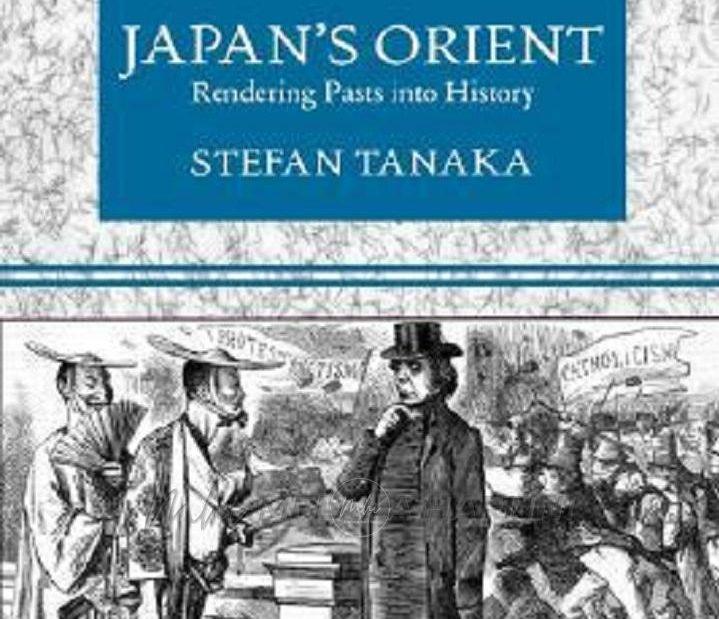
Japan’s Orient: Tōyō and the Belief on Malay Origins
THE Japanese narrative sees itself as intellectually and culturally competing with Europe. It seeks to be recognized as culturally and technology Western. Japanese historians and intellectuals towards the end of the 19th century began to struggle to redefine Japan as most civilized; and to become modern without losing their identity.
Japan was much troubled by a backward Orient. The Japanese believe in the scientific study of man, more specifically in European Enlightenment and Romantic historiography. Tōyō, which literally means eastern seas, and normally understood as the Orient, became the Japanese pasts. The leading object within that realm was Shina. China, and the rest of Southeast Asia – mainland and the Malay Archipelago, were the Japanese Orient. They needed to have one. Because the West has earlier produced theirs. The narrative of Japan’s modern period drew parallels to that of Europe in its encounters and experience with the rest of the world.
To illustrate Japan’s need for an orient, we use the example of Shina, the Japanese appellation for China, during the first half of the 20th century. Various Japanese groups in the modern period used Shina to emphasize difference. Nativist (kokugaku) scholars, for example, use Shina to separate Japan from the barbarian/civilized or outer/inner implication of the term chūgoku. The term was used by early 20th-century Chinese revolutionaries to distinguish themselves from the Manchus of the Ch’ng dynasty (1644-1912).
In early 20th century Japan, Shina emerged as a word that signified China as troubled place mired in its past, in contrast to Japan, a modern Asian nation. According to Stefan Tanaka in Japan’s Orient: Rendering Pasts into History (1993), while Shina and Nippon (the pre-war and more nationalistic pronunciation of Nihon, meaning Japan) represent territorial constructions of nation states, tōyō represents a broader geocultural notion of territoriality. In a 1936 article, a historian at Waseda University, while recognizing several different uses of the word before the middle of the 1850s, argued that the meaning of tōyō after the Meiji Restoration became simply “that which was not the Occident.”
Later, tōyōshi began to take shape. It literally means Oriental history, the effort at establishing a Japanese perspective on its history. The thinking among Japanese intellectuals then was to fill the void of the European Enlightenment’s ‘world histories’. Japanese Oriental Studies is a contradiction in terms in itself. The Japanese Enlightenment wanted to parallel that of the European Enlightenment.
Progressive history was the mantra. Tanaka explains that by emphasizing the history of the East, as opposed to the West, Japanese historians accepted and maintained a geocultural distinction between the two regions. While tōyō assumed “merely cultural difference,” tōyōshi represents an authorized Japanese view of Europe and Asia. Significantly it established Japan’s cultural, intellectual and structural superiority over China. While Europe and the West became an other with which Japan compared itself, Shina became a different other, described as an object, an idealized space and time from which Japan developed.
Hence Shina was transformed as an object within Japan’s later 19th and 20th centuries ideological space, represented by tōyō. It was suggested that tōyō provided the conceptual arena for Japanese geopolitical and cultural claims that encompassed and located both Shina and other Asian entities, including the Malay archipelago. The Tanah Air was in the orbit of tōyō.
Tōyō in its earliest form, was used by Chinese merchants to refer to the body of water around Java, where the waters to the West was called seiyō, or the Western seas. The meaning of Japan began to change with growing awareness of Europe. Eurasia was divided into two – seiyō (West) and tōyō (East). Tanaka notes that during the 1880s, tōyō appeared in a number of publications as an appellation for the culture of the East; and by the end of the 20th century, tōyō signified the opposite of the Occident, including the characteristics connected with Oriental civilization (tōyō no bunmei) and peace (tōyō no heiwa).
Hence Tanaka’s book provides the debate on the narrative of origins. In the 1890s into the 1900s, Japanese intellectuals drew on competing theories of Western Orientalists on Japan’s beginnings in relation to Asia. Some have debated on whether the Japanese originated from “the Malay-Polynesian race, whether they derived from the same people as Koreans, or whether the original Japan was derived from the Thalassocracy comprising present-day Japan, Korea and south eastern China.
In an 1890 paper, Inoue Tetsujirō, professor of philosophy at the Tokyo Imperial University presented a version on origins in a speech to the Historical Association. The paper was titled “Proof of the Origins of the Japanese People.” Inoue argued that Japan’s ancestors were related to the Malays, and weighted his position on the Malay narrative. According to Tanaka, Inoue’s primary purpose was to refute the idea that that the Japanese and the Koreans originated from the same people.
Inoue believed that the Japanese were a mixed race composed primarily of Malay stock, “but also of some northern people, a few Chinese, and even Ainu.” Inoue’s refutation, according to Tanaka, was also aimed at criticizing the predominant interpretation among Western Orientalists that the Japanese belong to the Ural-Altaic linguistic group. The similarity between the Japanese and the Mongols (Ural-Altaic) was “an erroneous notion initially set forth by Western scholars to suggest Japanese inferiority to the West.”
These debates indicate the Japanese resistance to the West with regard to origins and the beginning of a progressive history. From the period of the Meiji Restoration, Japan made the rest of Asia as its orient. Asia became the spatial and temporal objects through which the Japanese defined themselves.
From the late 1800s, the Japanese already saw the value of oriental studies to their national past. They were concerned on teaching “Europeans to distinguish Japanese from others.” It is to show that Japan was much more advanced than Asia. In tōyō, geography becomes the foundation of Japan’s national past and future.
NEXT WEEK:
Of Nusantara and Nusantaria
Langgani saluran Telegram kami untuk dapatkan berita-berita yang terkini.


